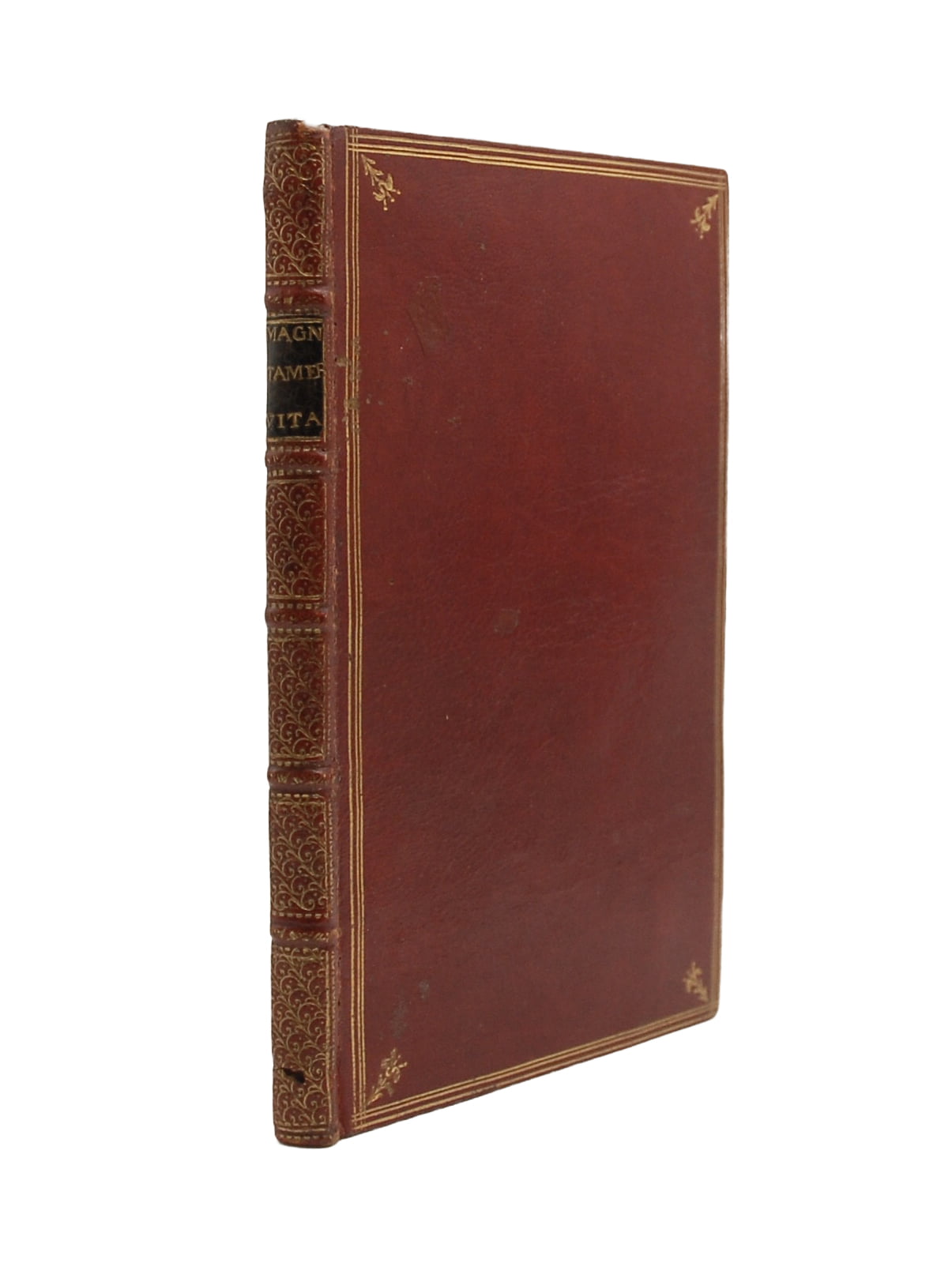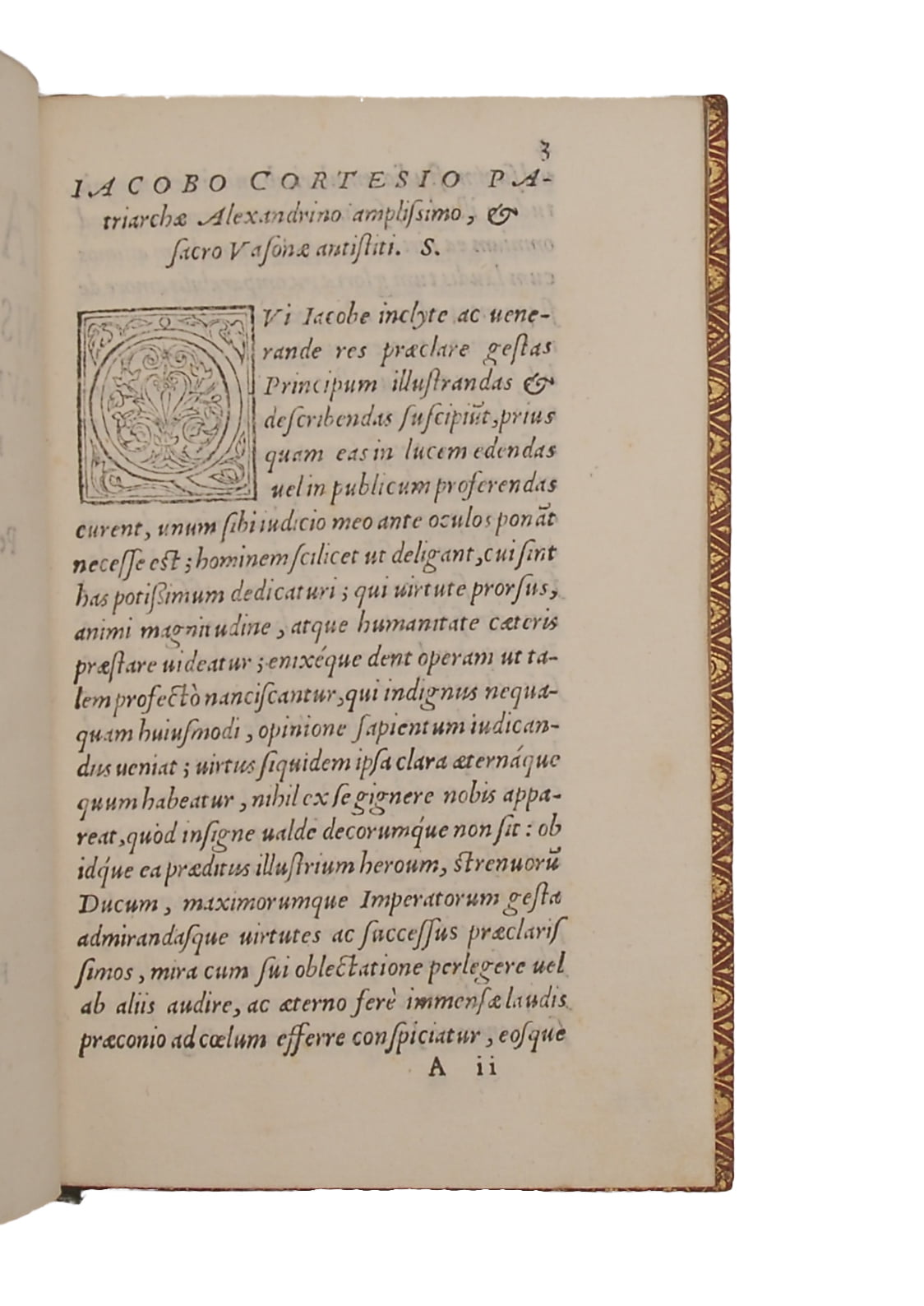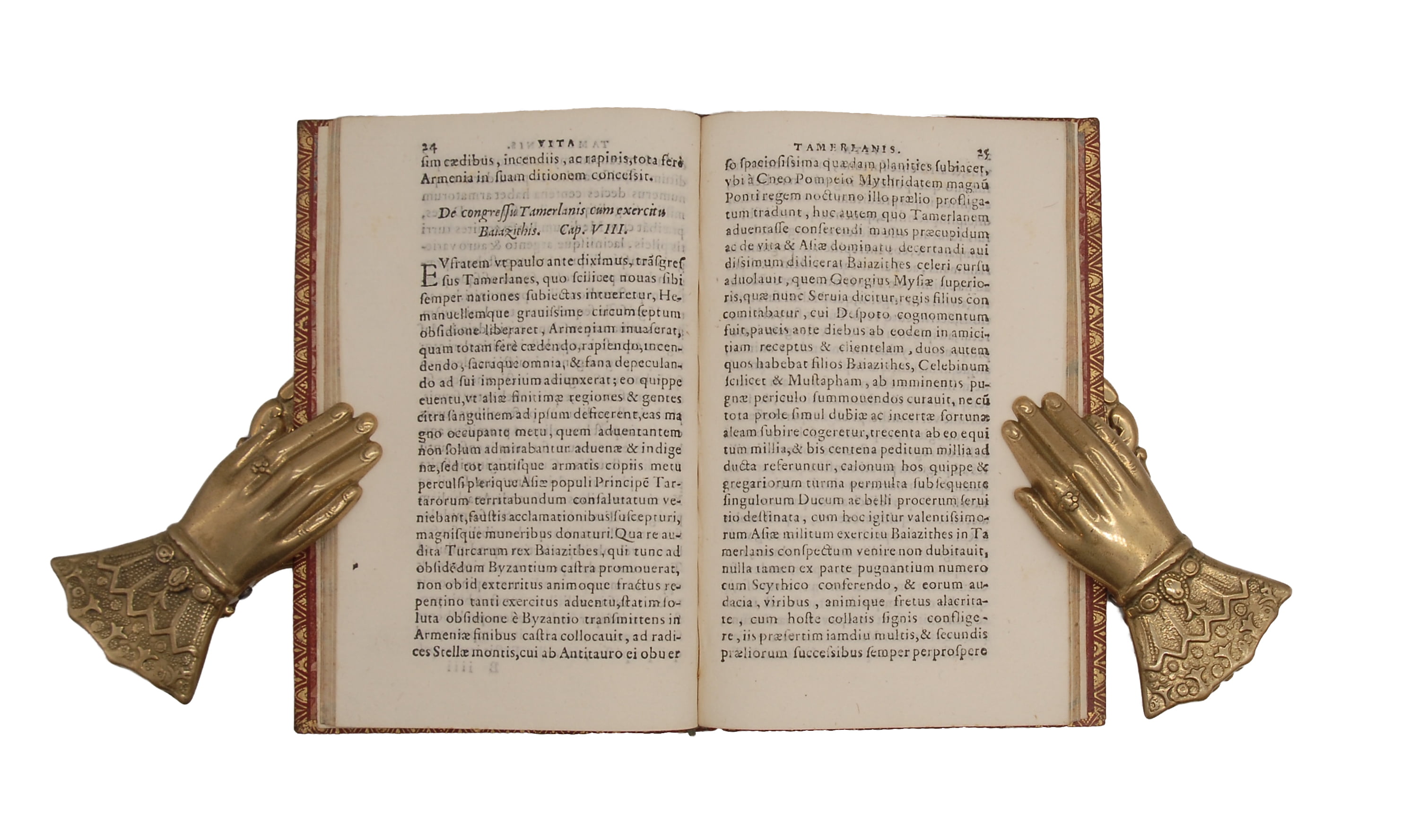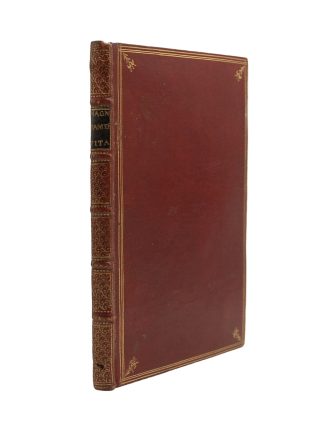PERONDINI, Pietro.
Magni Tamerlanis Scytharum imperatoris vita.
Florence, [Lorenzo Torrentino], 1553£6,500.00
FIRST EDITION. 8vo, pp. 54 (ii). Roman letter. Floriated and historiated initials, typographical ornament. A little light ink spotting to t-p and occasionally to blank margins, outer margin of pp. 34-36 slightly soiled, minimal water mark to lower outer corner of pp. 17-18. An extremely good, crisp, clean copy in C18 French red morocco, covers triple gilt ruled with fleurons at corners, spine with gilt raised bands and gilt spirals ‘a la grotesque’ in compartments, tiny damage to headband and lower compartment, title label gilt. Inner dentelles richly gilt, blue silk bookmark, marbled endpapers, a.e.g. Bookplate of Casimir Pignatelli d’Egmont (1727- 1801) to front pastedown.
Excellent copy of the rare first edition of this influential biography of the Turco-Mongol conqueror Timur, commonly known as Tamerlane. The author, Pietro Perondini, was born in Prato and appointed doctor in 1574. Other detail regarding his life is unknown, but he was a contemporary of Christopher Marlowe, who employed this succinct biography as a main source for his famous play ‘Tamburlaine the Great’.
Founder of the Timuride Empire, the conqueror Amir Timur (1336-1405) ruled from Russia to India, and from the Mediterranean Sea to Mongolia. He is remembered as one of the most ferocious and terrifying military leaders in history, as well as a patron of the arts, who both fascinated and horrified the Europeans during the Renaissance. Perondino’s biography begins with a few short chapters concerning Timur’s early life and rise to power. Then, a great portion of the book is dedicated to the war against the Ottoman Sultan Bayezid I (1360-1403): in these pages, the author portrays Bayezid’s sufferings in captivity, which are thought to have inspired the scenes in Marlowe’s drama. Then, Perondini describes the conquests in Parthia, Egypt, the siege of Damascus and Capha, focusing on Timur’s cruelty to the defeated. A few chapters at the end are dedicated to the conqueror’s physical and moral qualities, his military discipline and religious beliefs, his wife and children, and finally, his death, “he was tall and bearded, broad-chested and broadshouldered, well-built but lame, of a fierce countenance and with receding eyes, which express cruelty and strike terror into the lookers-on” (trad. Goldsmid).
The fine French red morocco binding is decorated with a delicate ‘a la grotesque’ motif, featuring a series of repeated spirals. These tools appeared in the 17th century and were first used on ‘a la grotesque’ bindings by Le Gascon (d. 1653). At the end of the 17th century and during the 18th century, similar ‘a la grotesque’ spines were realised by Luc-Antoine Boyet (active 1684-1733, see ‘Reliures françaises du XVIIe siècle’ n. 36) and Antoine-Michel Padeloup, commonly called Padeloup le jeune (1685-1758, see ‘Six siècles de literature française’, n. 239). Boyet was the official binder of King Louis XIV, or the Sun King, and Pandeloup succeeded him as ‘Relieur de Roi’. “In the skill, and taste, with which he forwarded his simpler bindings, he [Padeloup] belongs to the age of Boyet, and completes the art of the seventeenth century” (Horne). The works of these two outstanding French binders are celebrated for their beauty, elegance and quality of materials. If the leaves are fanned, a delicate red and blue decoration appears on the fore-edges, invisible when the book is closed.
This copy is from the library of the French nobleman, soldier and politician Casimir Pignatelli (1727-1801), count of Egmont, duke of Bisaccia and prince de Gavre.
USTC 847540; Brunet IV, p. 503; Graesse V, p. 204; this ed. not in Adams. I. de Conihout and P. Ract-Madoux, ‘Reliures françaises du XVIIe siècle: Chefs-d\\\\\\\'oeuvre du musée Condé’ (Somogy, 2002). V. de Diesbach-Soultrait, Six siècles de literature française, XVII siècle, Bibliothèque Jean Bonna (Genève 2017). H.P. Horne, The binding of Books (London 1894). F.J. Goldsmid, Perplexities of Oriental History (Transactions of the Royal Historical Society II, 1885).In stock






